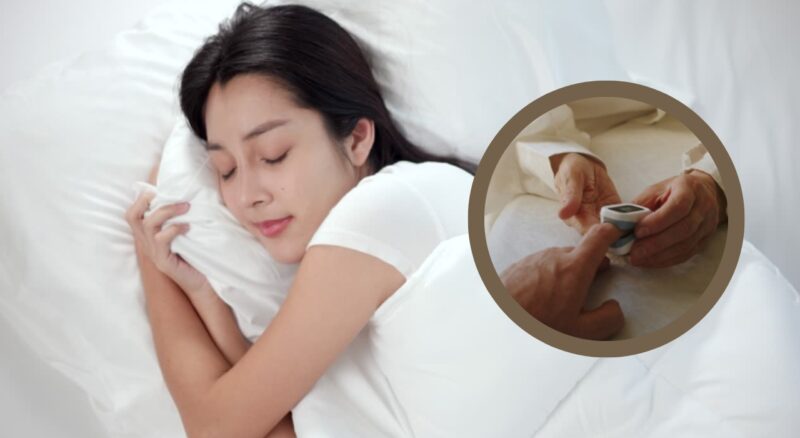Sleep, as we all know, plays a critical role in our overall health and well-being. But what if your peaceful slumber is interrupted by breathing problems? What if you are not getting enough oxygen while you sleep? Here’s where an overnight oximetry test comes into play. So, sit back, relax, and let’s delve into this fascinating subject together.
Sleep-Related Breathing Disorders in a Nutshell

Sleep-Related Breathing Disorders are a group of conditions that affect the way you breathe while you sleep. These disorders, which include conditions like sleep apnea and snoring, can lead to poor-quality sleep and other health problems if left untreated.
- Sleep Apnea: This is a serious disorder that causes your breathing to stop and start repeatedly during sleep.
- Snoring: While often dismissed as just a nuisance, heavy snoring can sometimes indicate a serious sleep disorder.
The Impact of Sleep-Related Breathing Disorders
When you have a sleep-related breathing disorder, it can affect more than just your sleep. These disorders can lead to a variety of health issues, including heart disease, high blood pressure, stroke, and diabetes.
- Heart Disease: Sleep disorders can cause irregular heart rhythms and increase the risk of heart disease.
- High Blood Pressure: Interrupted sleep can lead to higher than normal blood pressure during the night and increase hypertension risk.
What is an Overnight Oximetry Test?
Before we delve into what an overnight oximetry test is, it’s important to grasp the basic concept of blood oxygen saturation.
Blood Oxygen Saturation Explained
Blood Oxygen Saturation (SpO2) is a measure of how much oxygen your blood is carrying compared to its maximum capacity. In healthy individuals, the SpO2 levels should typically be at least 95%.
- Low SpO2 Levels: If your SpO2 levels drop below the healthy range, it could mean that your body isn’t getting the oxygen it needs, a condition known as hypoxia.
- Hypoxia: Chronic hypoxia can lead to serious health complications, including heart disease, respiratory problems, and brain damage.
The Overnight Oximetry Test
An Overnight Oximetry Test is a simple, non-invasive procedure used to measure and record your blood oxygen level while you sleep. This test helps doctors diagnose sleep-related breathing disorders, understand their severity, and guide appropriate treatment.
- How It Works: The test uses a small device called an oximeter, which is typically clipped onto your finger. It measures the amount of oxygen in your blood and records data for your doctor to review.
- Importance: The results can indicate if you have sleep apnea or other sleep-related breathing disorders. It can also help your doctor assess how well treatments for these conditions are working.
Preparing for an Overnight Oximetry Test

While the test is fairly straightforward, there are a few things you should know to prepare for it.
Before the Test
The preparation for an overnight oximetry test is simple and stress-free. Your healthcare provider will give you the oximeter device, along with instructions on how to use it.
- Setup: The device is easy to set up. You’ll typically place it on your finger before you go to bed and remove it when you wake up in the morning.
- Lifestyle Factors: Avoid smoking or drinking alcohol before the test, as they can affect oxygen levels.
During the Test
During the test, it’s important to carry on with your usual sleep routine. The oximeter will record your blood oxygen levels throughout the night.
- Movement: While you sleep, try to limit your movement to prevent the device from coming off your finger.
- Device Function: The oximeter will shine a light through your finger to measure the oxygen in your blood. It doesn’t hurt and is perfectly safe.
The Results of an Overnight Oximetry Test

The results of your overnight oximetry test will provide valuable insights into your sleep health.
Reading the Results
After you return the oximeter to your healthcare provider, they will download and analyze the data. They’ll look at how your oxygen levels varied during your sleep.
- Normal Results: If your blood oxygen levels stayed above 95% throughout the night, your results are typically considered normal.
- Abnormal Results: If your oxygen levels dropped significantly during your sleep, it could suggest a sleep-related breathing disorder.
What Comes Next
If your test results are abnormal, your healthcare provider will discuss the next steps with you. This may involve further testing, such as a sleep study or starting a treatment plan.
- Sleep Study: Also known as polysomnography, this test records brain waves, heart rate, breathing, and more while you sleep.
- Treatment Plan: Depending on the severity of your sleep disorder, treatment could involve lifestyle changes, devices like CPAP, or even surgery.
The Importance of Overnight Oximetry Tests

While it may seem like just another test, the importance of an overnight oximetry test can’t be underestimated.
Early Detection of Sleep Disorders
An overnight oximetry test can provide an early diagnosis of sleep-related breathing disorders. Early detection can help prevent potential complications and improve your quality of life.
- Sleep Quality: Diagnosing and treating sleep disorders can help improve your sleep quality, leading to better physical and mental health.
- Preventing Complications: Untreated sleep disorders can lead to serious health issues. By catching the disorder early, you can potentially prevent these complications.
Monitor Treatment Effectiveness

Besides diagnosing sleep disorders, overnight oximetry tests can also help monitor the effectiveness of treatment. This allows your healthcare provider to adjust your treatment plan as needed, ensuring you get the best possible care.
- Treatment Evaluation: If you’re using a device like a CPAP machine for sleep apnea, the test can help assess if it’s working effectively.
- Guided Care: Based on the test results, your doctor can make informed decisions about modifying your treatment plan.
At-Home vs In-Lab Overnight Oximetry Tests
Overnight oximetry tests can be conducted in the comfort of your home or in a sleep lab. Let’s delve into the differences.
At-Home Overnight Oximetry Tests
At-home overnight oximetry tests offer the convenience of testing in your familiar environment. This might be especially beneficial for those who find it hard to sleep in a new place.
- Comfort and Convenience: Being able to sleep in your own bed can make the test less stressful.
- Lower Costs: At-home testing can be more cost-effective than in-lab testing, which might be beneficial for those without comprehensive health insurance.
In-Lab Overnight Oximetry Tests

In-lab tests are performed in a specialized sleep lab under the supervision of sleep technicians. This option can provide more comprehensive data, especially in complex cases.
- Comprehensive Monitoring: In addition to oximetry, these tests can monitor other variables, like brain activity and muscle movements.
- Immediate Assistance: In case of any issues with the test, a technician is present to offer immediate help.
Potential Challenges with Overnight Oximetry Testing
Like any diagnostic test, overnight oximetry tests have their limitations. It’s essential to understand what these are.
Limitations of the Test

While valuable, an overnight oximetry test does have limitations. It specifically measures oxygen saturation and may not detect all sleep disorders.
- Incomplete Diagnosis: The test may not identify certain conditions, like insomnia or restless leg syndrome, which do not affect oxygen levels.
- False Positives: Things like moving during sleep or poor circulation can sometimes cause the test to indicate a problem when there isn’t one.
Troubleshooting Common Issues
Despite the test’s simplicity, you may encounter some challenges during an at-home oximetry test. Fortunately, these can be easily addressed.
- Device Displacement: If the oximeter slips off during the night, simply reattach it to your finger.
- Incorrect Readings: Make sure your finger is clean and avoid bright light, as these factors can interfere with the accuracy of the reading.
Living with Sleep-Related Breathing Disorders

If you are diagnosed with a sleep-related breathing disorder, know that you are not alone. There are various ways to manage these conditions effectively.
Lifestyle Changes
Many people with sleep disorders find relief through simple lifestyle changes. These may include weight loss, regular exercise, and avoiding alcohol or sedatives.
-
- Weight Loss: Extra weight can constrict your airway, making it harder to breathe at night.
- Regular Exercise: Regular physical activity can help regulate your sleep patterns and improve sleep quality.
Medical Treatments
If lifestyle changes aren’t enough, various medical treatments can help manage your condition.
- CPAP Machines: Continuous Positive Airway Pressure (CPAP) devices keep your airway open while you sleep, helping maintain consistent oxygen levels.
- Surgery: In severe cases, surgeries like uvulopalatopharyngoplasty or maxillomandibular advancement can help treat sleep apnea.
The Link Between Sleep and Overall Health

The quality of your sleep directly impacts your overall health. Understanding this link can further highlight the importance of addressing sleep disorders.
Impact on Physical Health
Chronic sleep deprivation can contribute to various physical health problems, from weight gain to weakened immunity.
- Weight Gain: Lack of sleep can interfere with your body’s hunger hormones, leading to weight gain.
- Weakened Immunity: Poor sleep can weaken your immune system, making you more susceptible to infections.
Impact on Mental Health
Sleep is also crucial for your mental health. Lack of quality sleep can lead to mood changes, anxiety, and depression.
- Mood Changes: Lack of sleep can make you irritable, and anxious, and even lead to mood swings.
- Mental Health Disorders: Chronic sleep deprivation can contribute to more serious mental health conditions like depression and anxiety disorders.
Final Words
Overnight oximetry tests play a vital role in detecting, diagnosing, and managing sleep-related breathing disorders. It’s a simple, non-invasive test that can be done from the comfort of your own home, yet its impact on your health can be significant. If you suspect that you might have a sleep disorder, talk to your healthcare provider about undergoing an overnight oximetry test. It might just be the first step towards better sleep and better health.

